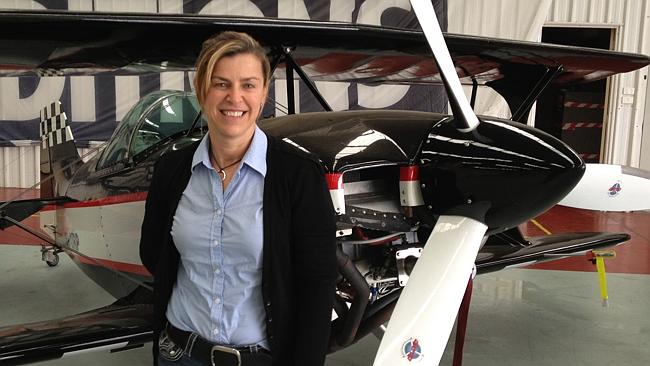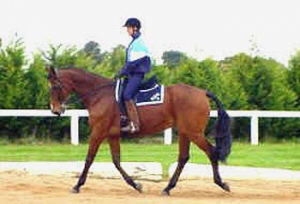Janine Shepherd: The Power of Defiance
Janine Shepherd’s story reads like the plot of a Hollywood movie. A champion cross-country skier in training for the Winter Olympics, her life was irrevocably altered during a bike ride to the Blue Mountains when she was hit by a truck. Her neck and back were broken in four places, as were her right arm, collarbone, and five ribs. Her right leg had been ripped open, she had sustained massive internal injuries and severe lacerations to her abdominal area, and she had lost five liters of blood. The bleeding alone was enough to kill her. Doctors warned her parents that she was not expected to survive her ordeal.
Even if by some small chance she recovered, she would never walk again.
Coming to terms with her shattered Olympic dreams, refusing to believe what expert medical staff were telling her about her chances of any kind of recovery, Janine focused every sinew of her being on healing her broken body and crushed morale. Her fighting spirit was rekindled watching small planes flying overhead.
She said to herself, “If I can’t walk, I’ll fly.” And fly she did. Within a year she had her private pilot’s license; 12 months later, her commercial license; soon after, her instructor’s permit and aerobatic endorsement. And all the while she pushed her body to mend itself, forced her legs to walk again, step by painful step.
Here is her story, a testament to the power of the human spirit, and one that will move and inspire all who read it.
Janine Shepherd is a person of incredible courage and strength. A gifted athlete in training for the Winter Olympics, she was hit by a truck while bike riding and was not expected to live.
Her injuries were horrific – her neck and back were broken in four places, as were her right arm, collarbone and five ribs, her right leg had been ripped open, she had sustained massive internal injuries, severe lacerations to her abdominal area and had lost five litres of blood.
With a future as a world champion cross country skier and the holder of numerous national titles in athletics, Janine was destined for sporting greatness. Janine was told she would not ski again, may not walk again and would not be able to bear children. Her dreams seemed shattered. Despite seemingly impossible odds, Janine fought back.
Determination, a fighting spirit and the support of family, friends and medical staff all contributed to Janine’s incredible recovery.
Not only did she walk again, have two children and return to university and gain a degree in Human Movement, she took up flying and gained her private pilot’s license, commercial license and her instructor’s permit.
Janine’s remarkable story is told in her widely acclaimed book Never Tell Me Never. She was featured on 60 minutes and her tale has been told in various publications. The hit movie Never Tell Me Never starring Claudia Karvan as Janine was widely acclaimed and shown on National Television.
A true inspiration, Janine is a motivating and moving speaker. She has spoken to a wide variety of audiences including addressing the Queen’s Trust Future Prospectives Forum as the inspirational speaker. Her presentations focus on her new life philosophy drawing on her journey from tragedy to triumph.
Janine Shepherd : The Next Challenge : The 2004 Olympics
Janine Sheperd is new to riding.
She has partial paraplegia after an accident well documented in her book “Never Tell Me Never”. Well here she is with Jacananda Tisharna who is having her first aromatherapy treatment in preparation for the State Disabled Dressage Championships in July. Janine had just been assessed as a Grade 4 competitor after riding for only 6 months. This is a remarkable achievement for an able-bodied rider and you can expect to see Janine and Sharni competing at many competitions to come.
https://www.youtube.com/watch?v=_ltDJynTduY
Here are some gems from Janine’s story:
- The human spirit is incredible when we make a choice and commit to it completely.
- Why bounce back when you can bounce forward.
- Have the courage to take a new path and stretch your comfort zone.
- Forget ‘why does this always happen to me’ if you talk this way it will ‘always’ happen to you until you learn the lesson and can move on.
and my favourite…
5. Love The Hills! Accept and embrace that life is full of hills, once you do this you have the edge and can conquer anything.
After I left the breakfast I was buzzing. There was so much more that she shared with us and that resonated with me, if you are interested in reading more about Janine and being inspired beyond belief take a look at her website: http://www.janineshepherd.com/
I certainly intend to take these gems and apply them to my own life journey.
There is so much that is so good about Janine’s talk.
Here are just five of the lessons:
1. A Powerful Opening
Too often, speakers begin with a safe and boring statement such as, “It’s nice to be here. Today I am going to talk to you about …”. But this how Janine began:
Life is about opportunities, creating them and embracing them. And for me, that was the Olympic dream. That’s what defined me. That was my bliss.
She starts with a compelling and powerful statement that is relevant for anyone. She then proceeds to say how it was relevant for her. Moreover, the four sentences above are progressively shorter, giving the whole opening a nice rhythm. I am sure that these four simple sentences were the result of a lot of work and reflection.
Lesson: Your opening is incredibly important. It is your only chance to make a good first impression. Don’t waste it. Protect it. Make it special.
2. Excellent Use of Props
Props can enhance a speech or presentation. Janine used two simple props to great effect.
First, the use of five chairs to represent five stages of her life (from her accident to becoming a pilot) is very clever. There is a natural progression and it is easy to follow. I particularly appreciated the moment, at 9:20 of the talk, when Janine is sitting on the fourth chair (after she has left the hospital) and she reaches back to the third chair (the hospital spinal ward) as she remembered her friend, Maria who was still there.
Second, the use of the straws—including placing one on every chair in the audience— was both a great reminder of the story in the hospital and a powerful metaphor for the point that we are all connected. Because the straws were already on the seats, and the element of surprise at the end would have been mitigated by the story about the straws in the middle of the talk. One way to maintain the element of surprise would be to tape the straws underneath the seats and have people reach for them. Of course, this would require more preparation and could be cumbersome for some audience members.
Lesson: Props can be very effective. Here are ten tips for using them.
3. Excellent Use of Humour
Well-timed humour is always appreciated in a speech. It is especially appreciated in a speech such as Janine’s that is filled with many heavy, emotional moments. By making light of her own circumstances, Janine gives us permission to laugh, and that laughter is like a much needed breath of fresh air that prepares us for what is to follow.
And so, we have wonderful examples throughout the talk, such as the following:
2:10 – After describing her horrific injuries: “I was having a really bad day.”
4:12 – After coming out of a long and complicated surgery: “I thought, Great! Because I’m going to the Olympics!”
6:25 – After getting the pile of straws: “Well, there wasn’t much else to do in the spinal ward, so we did.”
11:55 – Her mother’s reaction to Janine’s decision to fly: “She said, ‘That’s nice, dear.’”
12:25 – Showing how she walked into the airport: “I can tell you that I did not look like the ideal candidate to get a pilot’s license.”
14:35 – “Mom said she was forever following me … wiping off my fingerprints … but at least she always knew where I was.”
Lesson: It is perfectly OK to tell your audience a moving story and bring them down emotionally. But don’t leave them down throughout your talk. Look for moments of lightness that will give your audience a bit of a break. Craft your speech so that there are highs to counterbalance the lows.
4. Excellent Use of Language
On the TED site, you can see the transcript of Janine’s speech. Have a close look. Those words do not happen by accident. They are the result of hours of writing, thinking, rewriting, cutting, agonizing and writing some more.
Janine uses a variety of techniques—vivid, descriptive language that evokes all of the senses; dialogue; rhetorical devices; and more—to make her speech come alive. And note that there are few complex words. For the most part, she uses simple words. And those are the best words.
Here are some of the phrases and sentences that I particularly appreciated:
“[I]t was the perfect autumn day: sunshine; the smell of eucalypt and a dream. Life was good.”
“… as I sucked in the cold mountain air, I could feel it burning my lungs …”
“I was an athlete. That’s all I knew; that’s all I’d done. If I couldn’t do that, then what could I do? … [I]f I couldn’t do that, then who was I?”
“I realized that this wasn’t just my life; it was life itself. I realized that this wasn’t just my pain; it was everybody’s pain.”
Lesson: Writing a good speech takes time and effort. The reward is worth the effort.
5. A Willingness to Be Vulnerable
A while back, I wrote a post entitled, You’ve Got to Get Naked on Stage. In it, I wrote that when we allow ourselves to be vulnerable on stage, magic moments can occur. When we speak, the focus should be outward instead of inward. We should focus on our message; show some emotion; be 100% in the moment. Most importantly, we should care about your audience.
Janine does all of this in spades. There is no point in trying to single out a particular moment in which she shows her emotion. Her entire speech is a textbook lesson in how to be vulnerable on stage. And her audience is there with her the entire way.
Lesson: Be willing to show some of your humanity—your fears; your hopes; your emotions—on stage. Your audience will appreciate it.
Keep Flying High, Janine


